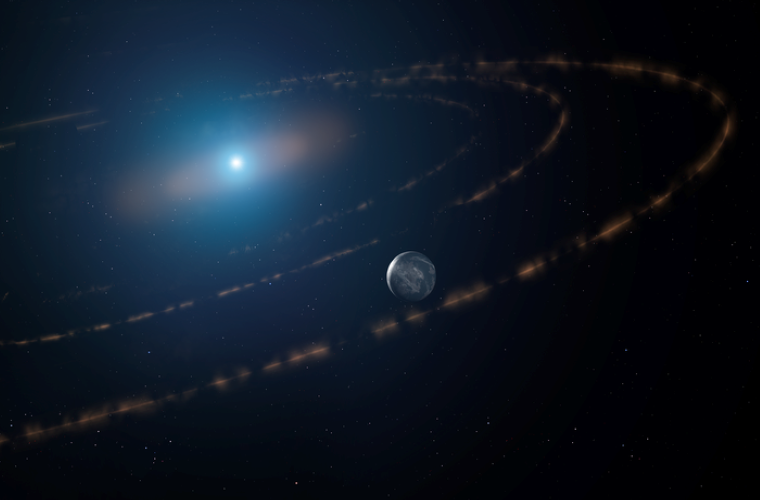Researchers studying a white dwarf star say they have detected signs of a possible planet orbiting within the star’s habitable zone. Often referred to as the Goldilocks zone, this orbit is the right temperature to allow for liquid water to exist on the planet’s surface, making it an ideal place to search for extraterrestrial life. If confirmed, the discovery would be only the second planet spotted around a white dwarf and the first spotted within the habitable zone.
WHITE DWARF STARS ARE DEAD SUNS
White dwarf stars are more or less like our Sun, only they have exhausted their hydrogen fuel and are slowly cooling down toward their ultimate death. This cooling phase can last as much as two billion years, providing an ample window of opportunity for life to take hold on any planet within the star’s habitable zone.
Still, any planet that had previously existed in the goldilocks zone before the star died would have been wiped out during its red giant phase, much like Mercury, Venus, and most likely Earth will be when our Sun makes its dying transition. This situation means that any planet found in the white dwarf’s water-friendly orbit would have to start making life from scratch.
In this latest study, a team of astronomers looking at a white dwarf say they have spotted the telltale signs of a planet that may fit that criterion, making it a tantalizing target for life-hunting astronomers.
DIMMING STAR REVEALS LIKLEY HABITABLE ZONE EXOPLANET
To make their discovery, researchers from the University College of London focused the New Technology Telescope (NTT), part of the La Silla Observatory in Chile, on a white dwarf about 117 light-years away known simply as WD1054–226. Over an 18 night period, the research team recorded a regular pattern of dimming in the star that indicated it had a string of moon-sized planetary structures in its orbit.
“The moon-sized structures we have observed are irregular and dusty (e.g., comet-like) rather than solid, spherical bodies,” said the study’s lead author and UCL Professor of Physics & Astronomy, Jay Farihi, in a press release announcing the discovery. “Their absolute regularity, one passing in front of the star every 23 minutes, is a mystery we cannot currently explain.”
However, the professor notes, one explanation makes the most sense; a planet.
“An exciting possibility is that these bodies are kept in such an evenly-spaced orbital pattern because of the gravitational influence of a nearby planet. Without this influence, friction and collisions would cause the structures to disperse, losing the precise regularity that is observed.”
“The possibility of a planet in the habitable zone is exciting and also unexpected,” admitted Farihi. “We were not looking for this.”
CONFIRMATION OF WHITE DWARF PLANET WOULD SIGNIFICANTLY EXPAND HUNT FOR LIFE
The professor cautions that his team did not find an exoplanet but instead have detected strong evidence for its existence. That is mainly because manmade telescopes can’t directly image an exoplanet, so they have to be inferred by effects on their host star.
“It is important to keep in mind that more evidence is necessary to confirm the presence of a planet,” explained Farihi. “We cannot observe the planet directly, so confirmation may come by comparing computer models with further observations of the star and orbiting debris.”
In the case of WD1054–226, the team took the extra step of comparing their observations with similar observations made by the NASA Transiting Exoplanet Survey Satellite (TESS). That comparison confirmed the obit of the planetary structures.
With results published in the Monthly Notices of the Royal Astronomical Society, this discovery adds to a growing body of evidence supporting the idea that life may not only exist on planets orbiting stars like our Sun but may also exist in the space around exceedingly-common white dwarf stars. Since 95% of Sun-like stars will eventually turn into white dwarfs, this discovery significantly expands the number of locations astronomers can look for alien life. Let the hunt for E.T. begin!
Follow and connect with author Christopher Plain on Twitter: @plain_fiction

